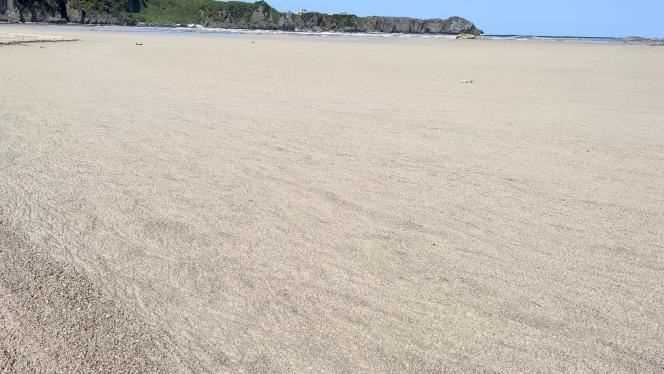The announced arrival of large quantities of pumice stone on the coast near Tokyo raises concerns for its ecological and economic consequences. According to forecasts released Tuesday, November 16 by the Japanese Oceanography and Earth Sciences Agency (Jamstec), volcanic stones, whose low density allows them to float, should reach the coasts of the departments of Chiba and Kanagawa. Slicks of these stones have already caused damage in Okinawa and Kyushu (southwestern Japan).
Extremely porous and easily crumbling, these pumice stones are a consequence of the eruption, on August 13, of the submarine volcano Fukutoku-Okanoba, located in the small archipelago of the Ogasawara Islands, in the Pacific Ocean, near 1,200 km south of Tokyo.
This eruption is said to be one of the most violent ever recorded since World War II in Japan, which has 111 active volcanoes. According to the National Institute of Advanced Industrial Technologies (AIST), it projected volcanic material up to 19,000 meters above sea level and released between 300 million to one billion tons of magma.
Its power even led to the formation of an islet – which should quickly disappear, estimates Setsuya Nakada, a volcanologist at the National Institute for Research on Earth Sciences and Disaster Resilience (NIED) – near the island of ‘Iwoto (formerly known as Iwo Jima).
Concern for the cultivation of algae
The eruption also produced tens of millions of tonnes of pumice stones, which drift in slicks in neighboring waters of Japan. At the end of September, they reached Okinawa, more than 1,400 kilometers west of the volcano, and the big island of Kyushu. As of November 5, their presence was observed in 81 ports in these regions. Carried by the Kuroshio Current, which follows a northern route from the Philippines and runs along the eastern coast of the Japanese Archipelago, part of it is drifting today and threatens the coasts near the capital.
These slicks cause damage to the marine ecosystem. Dozens of Indian mackerel have been found dead from ingesting it in Hentona Bay, Okinawa. Green turtles, an endangered species from Okinawa, are said to be threatened.
The flora suffers from a lack of light, the sun’s rays not being able to pierce the thick layers of these stones. The Katsuren fishing cooperative in Uruma, Okinawa, which produces mozuku algae, is worried because this cultivation is due to begin in November. “If there are large amounts of pumice stone on the surface of the water, the mozuku may not receive enough nutrients”, worries the operator Katsuo Oshiro to the Ryukyu shimpo, a local daily.
You have 35.21% of this article to read. The rest is for subscribers only.
